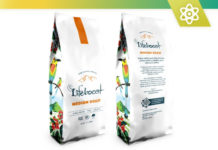Understanding the differences between aerobic and anaerobic exercise and how to incorporate both into your fitness routine can transform your health and wellness journey. Human bodies are designed to move, and the benefits of regular physical activity are undeniable. Yet, the type of exercise you choose—whether aerobic or anaerobic—can impact those benefits in varied and significant ways. This article aims to delve deeply into the nuances of these two types of exercise, providing you with a detailed roadmap to optimize your fitness strategy.
Aerobic exercise, or “cardio,” is any sustained physical activity that relies on oxygen intake to generate energy. Examples include walking, jogging, swimming, and cycling. These activities increase your heart and breathing rates for an extended period, leading to numerous health benefits, including improved cardiovascular health, increased stamina, and weight loss.
On the other hand, anaerobic exercise involves short bursts of high-intensity activity in which the body’s demand for oxygen exceeds the available oxygen supply. This exercise relies on energy sources stored in the muscles and includes activities like sprinting, weight lifting, and high-intensity interval training (HIIT). Anaerobic exercises primarily enhance muscle strength, power, and size.
Integrating aerobic and anaerobic exercise into your fitness routine can yield the best results, holistically improving your physical health, enhancing performance, and preventing diseases. Let’s explore these benefits in greater detail, alongside practical tips for incorporating each exercise type into your life.
Benefits of Aerobic Exercise
Aerobic exercise is a cornerstone of any fitness program due to its wide-ranging benefits. These exercises are particularly practical in improving cardiovascular health by enhancing the body’s ability to pump and utilize oxygen. Regular aerobic activity can lower your risk of heart disease, stroke, type 2 diabetes, and certain cancers.
One of the primary advantages of aerobic exercise is its ability to aid in weight management. By engaging in brisk walking, jogging, or cycling, the body burns calories, which helps maintain or reduce weight. Furthermore, these exercises can boost your metabolism and increase your stamina, making everyday activities easier and less tiring.
Moreover, aerobic exercise has a significant positive impact on mental health. Engaging consistently in aerobic activities has been shown to reduce symptoms of depression and anxiety, improve mood, and enhance cognitive function. The release of endorphins during physical activity, often referred to as the “runner’s high,” contributes to this mental uplift.
Clinical recommendations generally suggest at least 150 minutes of moderate-intensity aerobic exercise per week, or 75 minutes of vigorous-intensity exercise (Cleveland Clinic). This can be broken down into manageable daily segments, such as 30 minutes of brisk walking five times a week.
Benefits of Anaerobic Exercise
Anaerobic exercise, while often more intense and demanding than aerobic exercise, offers unique benefits. These activities are particularly effective for building muscle mass, increasing strength, and improving overall power. Weight lifting, sprinting, and HIIT are prime examples of anaerobic exercises that can push your muscles to their limits, forcing them to adapt and grow stronger.
Incorporating anaerobic exercise into your routine can significantly enhance your bone density, which is crucial for preventing osteoporosis and fractures, especially as you age (Healthline). Additionally, due to the high-intensity nature of these workouts, they tend to burn calories even after the exercise, a phenomenon known as excess post-exercise oxygen consumption (EPOC) or the “afterburn effect.”
Another vital benefit of anaerobic exercise is its role in improving metabolic health. Intense bursts of activity can increase the body's ability to metabolize glucose and improve insulin sensitivity, reducing the risk of type 2 diabetes. Regular anaerobic workouts can elevate your basal metabolic rate (BMR), meaning you burn more calories at rest.
Experts often recommend including anaerobic workouts, such as weight training or HIIT, at least twice to thrice a week to reap these benefits (WebMD).
Balancing Aerobic and Anaerobic Exercise
While each type of exercise offers unique benefits, the key to a well-rounded fitness regimen is balancing aerobic and anaerobic activities. A comprehensive fitness program should incorporate both elements to maximize overall health and performance.
It is typically advisable for beginners to start with aerobic exercises to build cardiovascular endurance. This foundation of stamina can then support more intense anaerobic activities. Once a comfortable aerobic base is established—such as handling 30 to 60 minutes of moderate-intensity aerobic activity four to five times a week—you can introduce anaerobic sessions into your routine (Runner’s World).
Integrating HIIT can be particularly beneficial for athletes or those looking to push their physical limits. HIIT combines short bursts of intense anaerobic exercise with periods of lower-intensity recovery, blending the benefits of aerobic and anaerobic exercise into one efficient workout. However, adequate recovery time is essential to prevent overtraining and injury.
Moreover, it is crucial to listen to your body and adjust your exercise intensity and volume based on your needs and fitness levels. Consulting with fitness professionals or healthcare providers can provide personalized guidance and help you design an exercise program tailored to your goals.
Practical Tips for Incorporating Aerobic Exercise
Starting an aerobic exercise routine can be straightforward, as many activities require little to no special equipment. Here are some practical tips to integrate aerobic exercise into your daily life:
- Walking and Jogging: These are among the easiest ways to get started with aerobic exercise. Walking is gentle on the joints and can be done almost anywhere. As you build endurance, jogging can be introduced to increase intensity.
- Cycling: Whether on a stationary bike or a regular bicycle, cycling is a low-impact exercise that can be adjusted for intensity by changing resistance or route difficulty.
- Swimming: This full-body workout is excellent for those with joint concerns, as the water provides resistance while supporting your weight.
- Cardio Machines: Treadmills, ellipticals, and rowing machines are staples in most gyms and offer a variety of settings to keep your workouts challenging and exciting.
Finding activities that you enjoy is the key to sustaining an aerobic exercise routine. This increases the likelihood of maintaining consistency, which is crucial for long-term health benefits.
Practical Tips for Incorporating Anaerobic Exercise
Incorporating anaerobic exercise can seem daunting due to its high-intensity nature, but it can significantly enhance your fitness with proper guidance and gradual introduction. Here are some tips to get started:
- Weight Training: Start with lighter weights to learn proper form and technique. Gradually increase the weight and complexity of exercises as you become more comfortable.
- HIIT: This can be done with or without equipment. An example of a simple HIIT workout could be alternating between 30 seconds of sprinting and 30 seconds of walking, repeated for several minutes.
- Calisthenics: Bodyweight exercises such as push-ups, pull-ups, squats, and lunges are effective anaerobic workouts that can be done anywhere.
- Plyometrics: These high-intensity movements, like jump squats or box jumps, are excellent for building explosive strength and power.
As with aerobic exercise, the most important factor is consistency. Finding anaerobic activities that are engaging and fit your lifestyle will help you stick with your routine.
Optimizing Your Exercise Routine for Maximum Benefits
To optimize the benefits of both aerobic and anaerobic exercise, consider these additional tips:
- Warm-Up and Cool-Down: Always start with a warm-up to prepare your muscles and cardiovascular system for exercise. Similarly, a cool-down period helps your body recover and reduces the risk of injury.
- Variety: Mixing up your routine keeps it exciting and challenges different muscle groups, preventing plateaus in your progress.
- Recovery: Adequate rest and recovery are crucial to avoid overtraining and injury. Listen to your body’s signals and ensure rest days are incorporated into your weekly routine.
Final Thoughts
Understanding the distinctions and benefits of aerobic and anaerobic exercise is crucial for designing a balanced and effective fitness routine. Both types of exercise play complementary roles in enhancing cardiovascular health, muscular strength, endurance, and overall well-being. Integrating aerobic and anaerobic activities into your fitness regimen can maximize health benefits and achieve a more holistic fitness level.
You can refer to resources such as Cleveland Clinic and Healthline for additional insights on incorporating these exercises into your daily routine. These sources provide detailed guidelines and tips to help you start and maintain a beneficial exercise program.
In conclusion, the journey to optimal health is a marathon, not a sprint. By understanding and leveraging the strengths of both aerobic and anaerobic exercise, you can create a well-rounded fitness routine that supports a healthier, happier, and longer life.













![Bowflex Max Total: 2024 Fitness Workout Exercise Machine [Review] Bowflex Max Total: 2020 Equipment Review For Complete Upper and Lower Body Workout](https://www.advancedliving.com/wp-content/uploads/2019/12/Bowflex-Max-Total-218x150.jpg)


